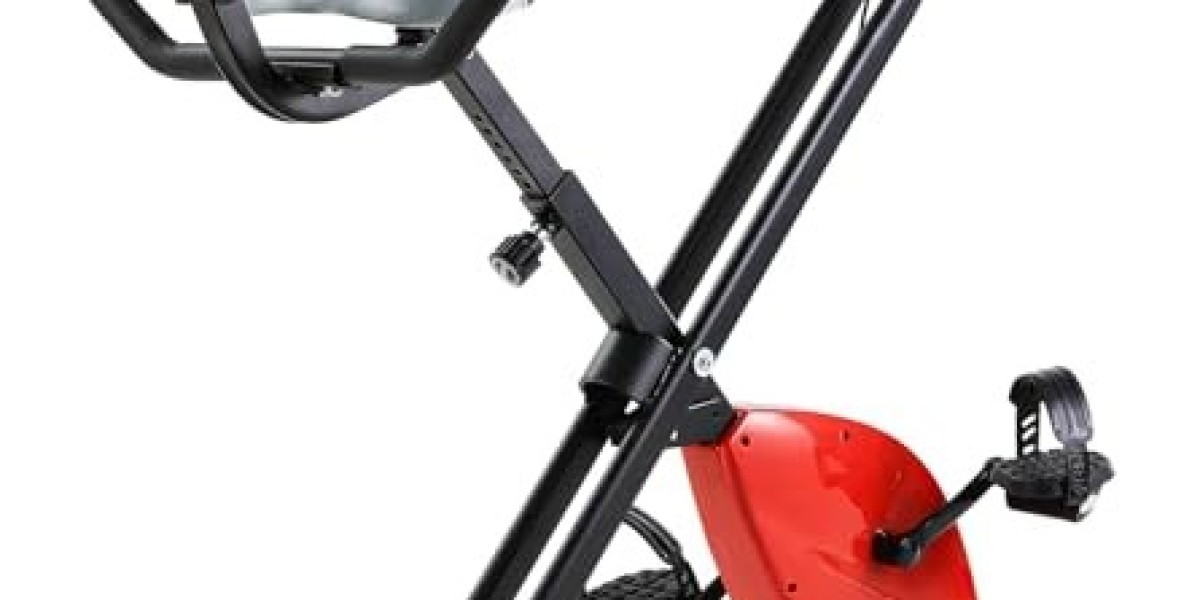
In the modern era, maintaining a healthy lifestyle has become increasingly important, and one of the most effective and accessible ways to do so is through regular exercise. Among the myriad of fitness equipment available, exercise cycles stand out as a versatile and convenient option for individuals looking to improve their cardiovascular health, build endurance, and burn calories from the comfort of their homes. This article delves into the benefits of owning an exercise cycle, the different types available, and factors to consider when making a purchase. Additionally, it includes a list of frequently asked questions (FAQs) and some helpful tips to guide potential buyers.
The Benefits of Owning an Exercise Cycle
Convenience
- One of the most significant advantages of having an exercise cycle at home is the convenience it offers. Unlike gym memberships, which require commuting and adhering to specific hours, an exercise cycle allows you to work out anytime, anywhere. This flexibility is particularly beneficial for those with busy schedules or limited mobility.
Cardiovascular Health
- Regular cycling can improve heart health by strengthening the heart muscle, lowering resting heart rate, and reducing the risk of heart disease. It is a low-impact exercise that can be adjusted to various intensity levels, making it suitable for people of all ages and fitness levels.
Weight Management
- Cycling is an excellent way to burn calories and lose weight. Depending on the intensity and duration of the workout, an individual can burn anywhere from 400 to 1000 calories per hour. This makes it a valuable tool for weight management and overall fitness.
Joint-Friendly
- Unlike running or other high-impact exercises, cycling is gentle on the joints. It is a non-weight-bearing activity, which means it does not put excessive stress on the knees, hips, or ankles. This makes it an ideal choice for individuals with joint pain or those recovering from injuries.
Stress Relief
- Exercise, in general, is known to reduce stress and improve mental health. Cycling, in particular, can be a meditative activity that helps clear the mind and release endorphins, the body's natural mood elevators.
Customizable Workouts
- Many exercise cycles come with pre-programmed workouts, resistance levels, and even virtual training courses. This allows users to tailor their workouts to their specific goals, whether it's building endurance, increasing speed, or improving overall fitness.
Cost-Effective
- While the initial investment in an exercise cycle may seem high, it can save money in the long run. Gym memberships, personal trainers, and fitness classes can add up over time, whereas an exercise cycle is a one-time purchase that can be used indefinitely.
Types of Exercise Cycles Available
Upright Bicycles
- Upright bicycles mimic the position of a traditional road bike. They are ideal for those who prefer a more upright posture and enjoy a dynamic workout. Upright bikes often come with multiple resistance levels and can be used for interval training, hill climbing, and other high-intensity activities.
Recumbent Bikes
- Recumbent bikes have a reclined seating position, which provides better back support and is easier on the knees. They are particularly popular among older adults and those with back or knee issues. Recumbent bikes are also suitable for longer, more relaxed workouts.
Spin Bikes
- Spin bikes are designed for high-intensity interval training (HIIT) and offer a more rigorous workout. They typically have heavy flywheels, adjustable resistance, and can simulate the experience of outdoor cycling. Spin bikes are often used in group fitness classes and can be a social and motivating way to exercise.
Indoor Cycling Bikes
- Indoor cycling bikes are similar to spin bikes but are more focused on comfort and stability for home use. They often have a more compact design and may come with additional features such as built-in screens, heart rate monitors, and connectivity to fitness apps.
Smart Bikes
- Smart bikes are equipped with advanced technology, including interactive screens, internet connectivity, and virtual training programs. They can connect to popular fitness apps and platforms, allowing users to participate in live or on-demand classes and track their progress in real-time.
Factors to Consider When Buying an Exercise Cycle
Fitness Goals
- Determine your fitness objectives. Are you looking to improve cardiovascular health, build muscle, lose weight, or simply maintain a healthy lifestyle? Different types of exercise cycles are better suited for different goals.
Space Requirements
- Measure the space where you plan to place the exercise cycle. Some models are more compact than others, and you should ensure there is enough room for the bike and for you to move around safely.
Budget
- Set a budget and stick to it. Exercise Bikes Online cycles range in price from budget-friendly options to high-end models with advanced features. Consider what you can afford and what features are most important to you.
Build and Durability
- Look for a bike that is well-built and durable. Check the weight capacity to ensure it can support your body weight and any added resistance. A sturdy frame and smooth operation are crucial for a comfortable and effective workout.
Comfort
- Test the bike if possible, or read reviews to ensure it offers a comfortable ride. Pay attention to the saddle, handlebars, and pedals. A bike that is uncomfortable can lead to a lack of motivation and potential injuries.
Technology and Features
- Consider the technology and features that are important to you. Some bikes come with built-in screens, heart rate monitors, and connectivity to fitness apps. Others may have simpler designs with manual resistance settings. Choose a bike that aligns with your preferences and needs.
Assembly and Maintenance
- Some exercise cycles require assembly, while others come pre-assembled. Consider your comfort level with DIY projects and the availability of professional assembly services. Additionally, look for bikes that are easy to maintain and have readily available replacement parts.
Frequently Asked Questions (FAQs)
How often should I use an exercise cycle?
- For optimal results, aim to use an exercise cycle at least 3-4 times per week. Consistency is key in any fitness routine, and regular cycling can lead to significant improvements in cardiovascular health and overall fitness.
Can I use an exercise cycle if I have joint pain?
- Yes, exercise cycles, especially recumbent bikes, are designed to be gentle on the joints. They provide a low-impact workout that can help improve joint mobility and reduce pain over time. Consult with a healthcare provider before starting any new exercise regimen.
What is the best way to warm up before using an exercise cycle?
- A proper warm-up is essential to prevent injuries and prepare your muscles for the workout. Start with a 5-10 minute gentle ride at a low resistance level, followed by dynamic stretches such as leg swings, arm circles, and torso twists.
How can I make my cycling workouts more challenging?
- Increase the resistance level, vary your speed, and incorporate interval training. You can also try hill climbs, sprints, and endurance rides to keep your workouts challenging and engaging. Many exercise cycles come with pre-programmed workouts that can help you achieve this.
Do I need special clothing to use an exercise cycle?
- While you don't need special clothing, it's best to wear comfortable, breathable clothing and proper cycling shoes if you have them. Cycling shorts and a moisture-wicking top can also enhance your comfort and performance.
How do I clean and maintain my exercise cycle?
- Regular cleaning and maintenance are crucial for the longevity of your exercise cycle. Wipe down the bike after each use to remove sweat and dirt. Check the manufacturer's instructions for specific maintenance requirements, such as lubricating the chain or tightening bolts.
Tips for Choosing the Right Exercise Cycle
Research and Compare
- Do your research and compare different models. Read reviews, watch demonstration videos, and check user feedback to get a better understanding of the bike's performance and reliability.
Test Before You Buy
- If possible, test the bike before making a purchase. Many sporting goods stores and fitness retailers offer demo sessions. This will give you a chance to see if the bike feels comfortable and meets your needs.
Consider Your Space
- Measure the space where you plan to place the bike and ensure it has enough clearance. Also, consider the bike's weight and whether you will need help moving it.
Look for Warranties
- Check the warranty offered by the manufacturer. A good warranty can provide peace of mind and protect your investment in case of any issues or defects.
Join Online Communities
- Join online communities or forums dedicated to home fitness. These platforms can offer valuable insights, tips, and recommendations from experienced users.
Conclusion
Owning an exercise cycle can be a transformative addition to your fitness routine, offering a convenient, effective, and enjoyable way to stay active and healthy. With a variety of options available, from upright bicycles to smart bikes, there is an exercise cycle to suit every need and budget. By considering your fitness goals, space requirements, and personal preferences, you can find the perfect bike to help you achieve your health and wellness objectives. Whether you're a seasoned cyclist or a fitness novice, an exercise cycle can be a valuable tool in your fitness arsenal.
Additional Resources
- Top Exercise Cycle Brands: Peloton, NordicTrack, Bowflex, Schwinn, and ProForm
- Fitness Apps for Cycling: Zwift, Peloton, and MyFitnessPal
- Workout Routines: HIIT, Tabata, steady-state cardio, and hill climbs
By taking the time to understand the benefits, types, and factors to consider, you can make an informed decision and find the right exercise cycle for your needs. Happy cycling!








